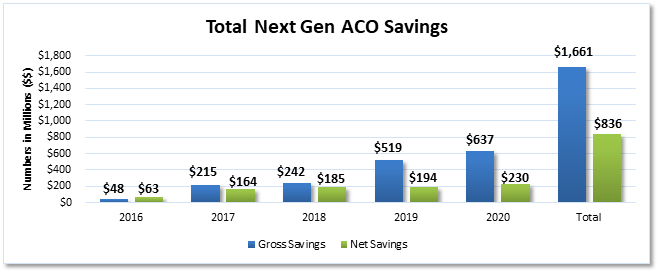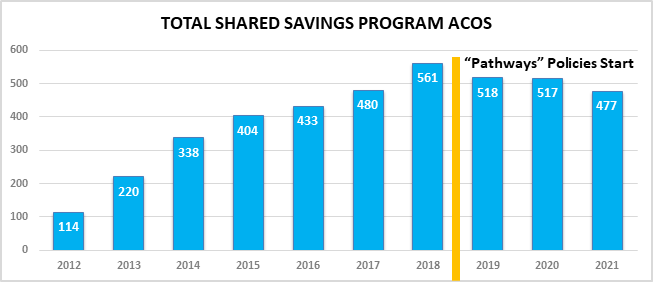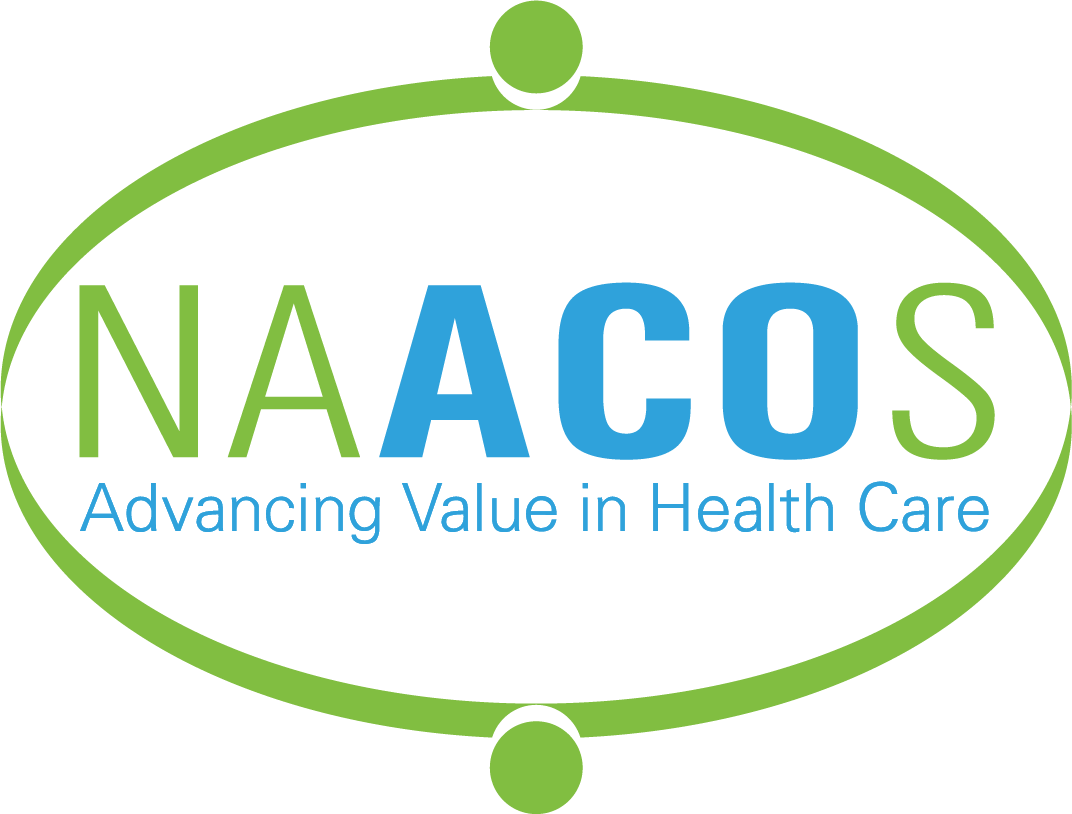Highlights of the 2019 ACO Program Results
Medicare accountable care organizations (ACOs) produced their highest annual savings to date in 2019, generating $3.2 billion in gross savings and $1.4 billion in savings after accounting for shared savings payments, shared loss payments, and discounts to CMS (the Centers for Medicare & Medicaid Services). These include figures from the Medicare Shared Savings Program (MSSP), Medicare’s largest value-based care program, and the Next Generation (Next Gen) ACO Model, the Center for Medicare & Medicaid Innovation (Innovation Center) program comprising some of the leading ACOs in the country. In 2019, 582 ACOs in the two programs cared for 12.2 million patients, comprising 20 percent of all Medicare patients and nearly a third of traditional Medicare patients. Importantly, data show these ACOs continued to provide high-quality care and yield satisfied patients. Since 2012, ACOs, including those in the MSSP and Next Gen Model, along with a now expired Pioneer ACO Model, have saved Medicare $8.5 billion and $2.5 billion after accounting for shared savings payments, shared loss payments, and discounts to CMS, as shown in Graphic 1 below. This document includes highlights of the 2019 results, which are based on public CMS data related to financial benchmarks and quality scores.
The National Association of ACOs (NAACOS) continues to urge policymakers to grow ACO programs, which have proven to be effective in lowering the cost of care while providing high-quality care. Potential policies include offering an appropriate balance of risk and rewards, making the Next Gen Model permanent, and providing equitable participation options in the new Direct Contracting Model.
Key Findings from the 2019 ACO Results

Graphic 1: Total gross and net savings generated to Medicare from various ACO programs

Graphic shows savings from the MSSP, Next Gen ACO Model, and Pioneer ACO Model. Net savings after savings after accounting for shared savings payments, shared loss payments, and discounts to CMS.
Leading Innovation Center ACO program banks another record-setting year
Source: CMS’s May 31, 2019 ACO Spotlight newsletter.

Graphic 2: Next Generation ACO Model Savings

Net savings are after accounting for shared savings payments, shared loss payments, and discounts to CMS.
Leading Innovation Center ACO program banks another record-setting year
Graphic 2: Total gross and net savings generated to Medicare from the Next Generation ACO Model

Quality continues to improve, out-pace other medical practices

ACOs get better with time
Table 1: The percent of ACOs that earned shared savings by their start year
|
Start Year |
Number of ACOs |
PY 2013 |
PY 2014 |
PY 2015 |
PY 2016 |
PY 2017 |
PY 2018 |
PY 2019 |
|
2012 |
50 |
28% |
35% |
42% |
42% |
49% |
57% |
78% |
|
2013 |
37 |
19% |
25% |
37% |
36% |
42% |
61% |
84% |
|
2014 |
70 |
N/A |
18% |
21% |
36% |
43% |
47% |
61% |
|
2015 |
63 |
N/A |
N/A |
21% |
26% |
28% |
23% |
35% |
|
2016 |
61 |
N/A |
N/A |
N/A |
18% |
28% |
42% |
57% |
|
2017 |
82 |
N/A |
N/A |
N/A |
N/A |
21% |
33% |
56% |
|
2018 |
112 |
N/A |
N/A |
N/A |
N/A |
N/A |
21% |
36% |
|
2019 |
66 |
N/A |
N/A |
N/A |
N/A |
N/A |
N/A |
41% |
Graphic 4: The percent of ACOs that generated savings and earned shared savings

*The MSR is the Minimum Savings Rate. It’s the level of savings that must be generated before an ACO can share in savings with CMS.
Table 2: NAACOS-member ACOs outperformed non-NAACOS members
|
|
Number of ACOs |
Beneficiaries Served |
Average Savings Per Beneficiary |
Net Savings to Medicare |
Average Quality Score |
|
NAACOS Members |
332 |
7,077,473 |
$257.93 |
$844,585,860 |
95.0% |
|
Non-Members |
209 |
3,922,452 |
$209.19 |
$347,269,196 |
94.41% |
Conclusion
While 2019 brought wonderful news for ACOs across Medicare, NAACOS continues to express concern at decreasing ACO participation. The number of ACOs in 2021 fell to its lowest total since 2017, the year before CMS enacted its Pathways to Success polices. Data continue to show that ACOs are saving Medicare money and improving quality and outcomes in the process. There should be no doubt that ACOs are succeeding. Policymakers should look for opportunities to grow ACO participation so that benefits of the program can spread to more patients, while helping solve Medicare’s looming insolvency issues.

